"All the buildings inside the Arabian Norman Itinerary in Palermo and the cathedrals of Cefalù and Monreale represent an example of coexistence, interaction and interchange between different cultural components of historical and heterogeneous geographical origins.
Tale sincretismo ha generato un originale stile architettonico e artistico, di eccezionale valore universale, in cui sono mirabilmente fusi elementi bizantini, islamici e latini, capace di volta in volta di prodursi in combinazioni uniche, di eccelso valore artistico e straordinariamente unitarie. Il sincretismo arabo-normanno ebbe un forte impatto nel medioevo, contribuendo significativamente alla formazione di una koinè mediterranea, condizione fondamentale per lo sviluppo della civiltà mediterraneo-europea moderna".
(© Application Dossier for entry to the World Heritage List of Palermo Arabo-Normanna and the Cathedrals of Cefalù and Monreale, December 2014)
UNESCO Arabian – Norman Itinerary: Royal Palace and Palatine Chapel - Church of San Giovanni degli Eremiti - Church of Santa Maria dell'Amiraglio – Zisa Palace - Church of San Cataldo - Admiral's Bridge - Cathedral of Palermo - Monreale Cathedral and Cloister - Cathedral of Cefalù and Cloister
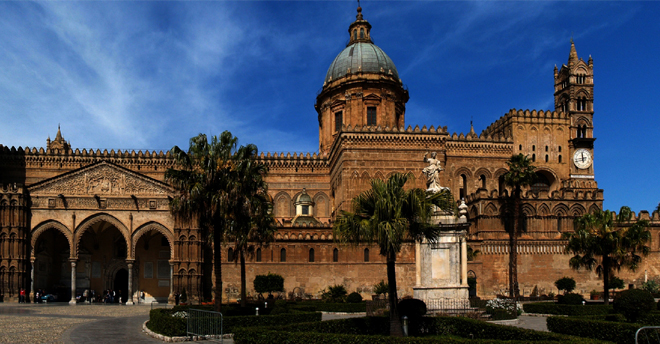
Palace of the Normans
Built in the 9th century. The Punic and Roman remains have always been the place of Palermo and Sicilian power, home for the Emirates, King and Viceroy, now the location of the Sicilian Parliament. Within the Norman palace, you can visit Ruggiero rooms, Yellow and Red Room, Duke Montalto room, Hercules room, Pompeii room and the wonderful Palatine Chapel.
Palatina Chapel
built in 1130, the same year of Ruggiero II coronation. It is adorned by splendid Byzantine mosaics and it is the cultural and political emblem of Norman domination in Palermo. Absolute masterpiece are the mosaics, made in golden leaves glued to glass tiles, making it particularly brilliant.
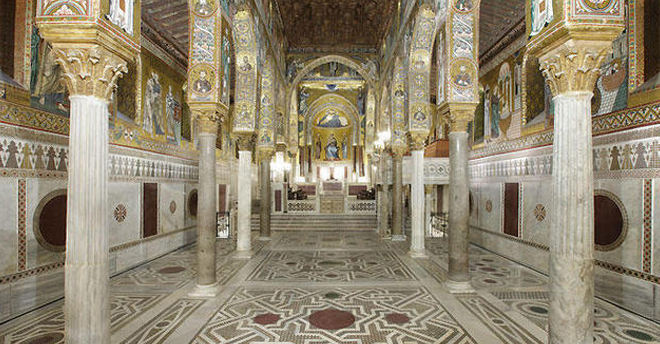
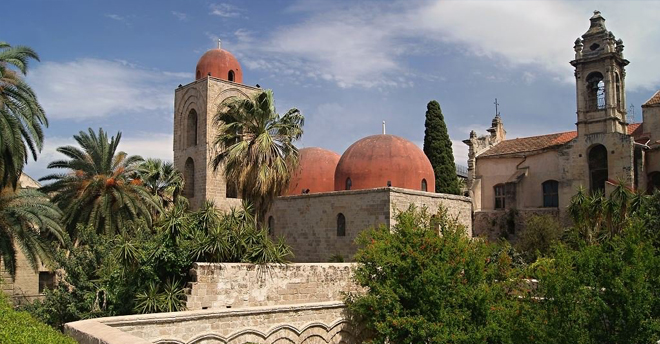
San Giovanni degli Eremiti
Built by Ruggero II between 1130 and 1148, who considered art as a "kingdom tool", is famous for its red domes typical of Arabic-Fatima art. The round domes (the sky) on square towers (the earth) are probably the symbol of Palermo. A small cloister is in the garden surrounding the church, full of perfumes and exotic colors of jasmine, orange and pomegranate.
Palermo Cathedral
Built in 1184, it preserves its original structure despite many changes in the centuries, the main one at the end of the 18th century with the addition of the lateral aisles and the Baroque dome. Inside you will find the sculptures of Gagini, the tombs of Henry VI, Federico II, Ruggero II and Costanza D'Aragona, but also passages of the Koran engraved in a column along with the silver urn that preserves the relics of S. Rosalia, Patron of Palermo.
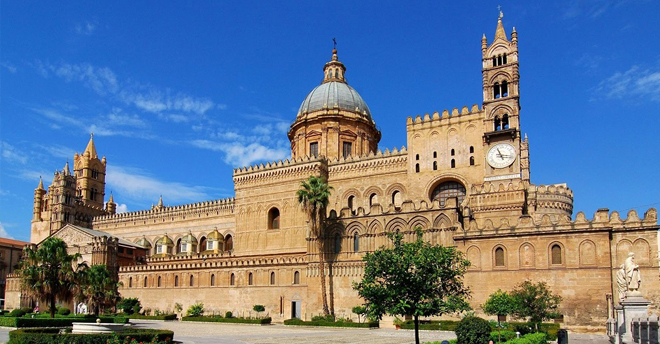
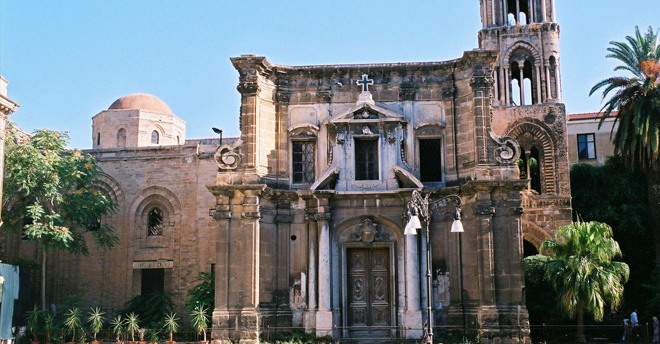
Church of Santa Maria dell'Ammiraglio
called "la Martorana". This one is no doubt one of the most beautiful churches in Palermo, especially for the wonderful Byzantine mosaics that decorate the interior parts. Its nickname originate from the monastery founded by Eloisa Martorana, which was famous for the preparation of marzipan fruit, hence the Martorana Fruit, which still delights our eyes and palate today.
Church of S. Cataldo
Located in front of the Martorana church, built in 1160 during the Norman period, it preserves the original shapes with the three red-haired Arabic-inspired dome. The interior, very impressive, although not covered by mosaics, is naked, and makes this clear the rectangular structure divided into three naves of six columns, with various capitals. The mosaic floor is original. The church is currently place of the Order of the Knights of the Holy Sepulcher.
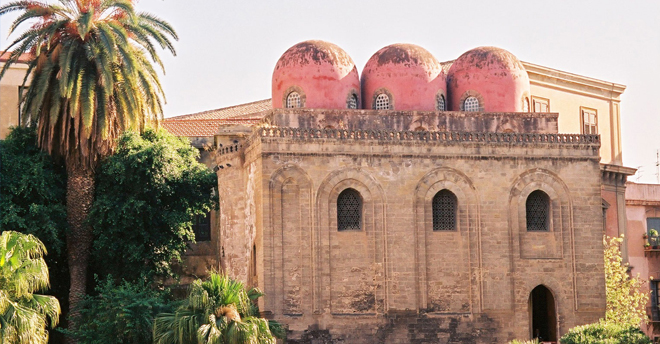
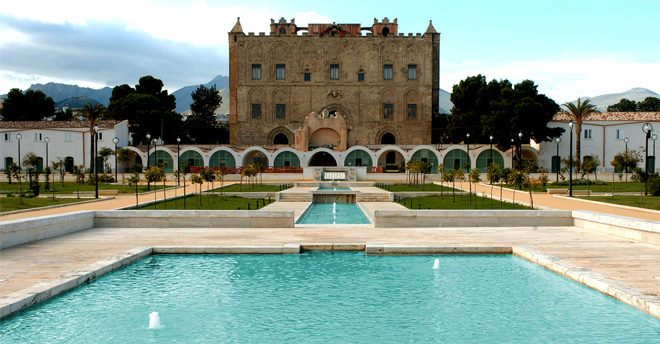
Zisa Castle
At the beginning Zisa castle was a summer residence created near the city for the rest and leisure of the king. Inside the Islamic Art Museum are exposed some significant artifacts of Islamic art coming from countries of the Mediterranean Basin. Not to be missed the elegant musciarabia (from Arabian language - masurabiyya), wooden grille screens (made up of hundreds of sprockets trained among them to create, such as lenses, designs and refined and light ornamental motifs) and Common use utensils or furniture (candlesticks, bowls, basins, mortars) made mainly of brass with embellished decorations and often embellished with ages (wires and thin strips) in gold and silver. We recommend to visit the beautiful garden outside the castle, completely restored, with the wonderful fountain and its characteristic buzzards.
Monreale Cathedral
The cathedral of Monreale is one of the greatest extant examples of Norman architecture anywhere. It was begun in 1174 by William II. In 1182 the church, dedicated to the Nativity of the Virgin Mary, was, by a bull of Pope Lucius III, elevated to the rank of a metropolitan cathedral. The church is a national monument of Italy and one of the most important attractions of Sicily.
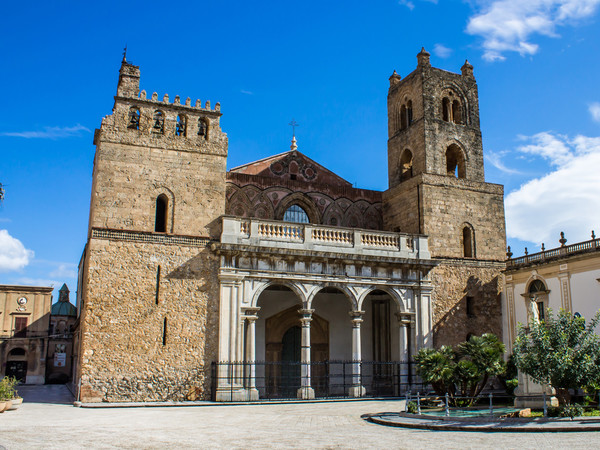
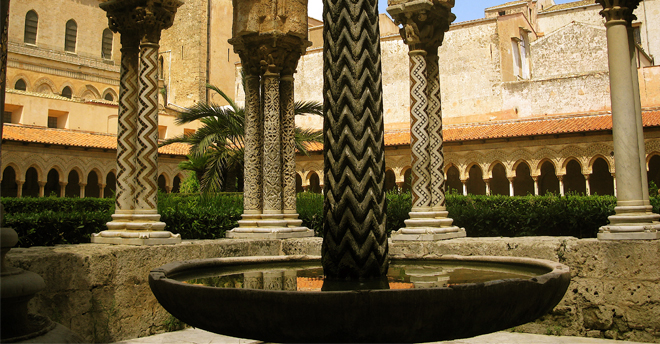
Cloister of Monreale
The cloister of the ancient Benedictine convent, also built by William II. The arches of the porch are supported by 228 columns of various ornamentation, many with mosaic inlays, others carved with arabesques. Capitals are decorated with biblical figures and representations.
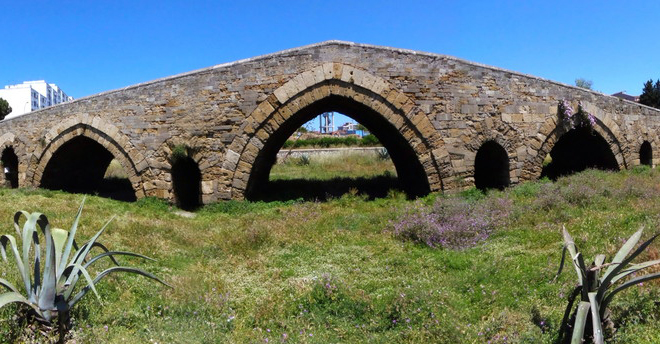
Admiral's Bridge
The Admiral's Bridge is composed by twelve arches of the Norman age, visible from the current Corso Dei Mille, one of the main street of Palermo. It was completed around 1131 by the will of Giorgio d'Antiochia, Admiral of King Ruggero II of Sicily, one year after the birth of the Kingdom of Sicily, to connect the city (become capital) to the gardens beyond the Oreto River. On May 27, 1860, during the Shipment of Thousands, Garibaldi, right on this bridge and in the nearby Termini gateway, clashed with the Borbone troops, where they were positioned because it was a point of entry to the city for those coming from South, then Garibaldi also came from Monte Grifone and precisely from the hamlet of Gibilrossa. This caused the insurrection of Palermo.
And many other things...
Don't esitate to ask information, our staff will be pleased to give you all the hints to see the most amazing places of Palermo!

